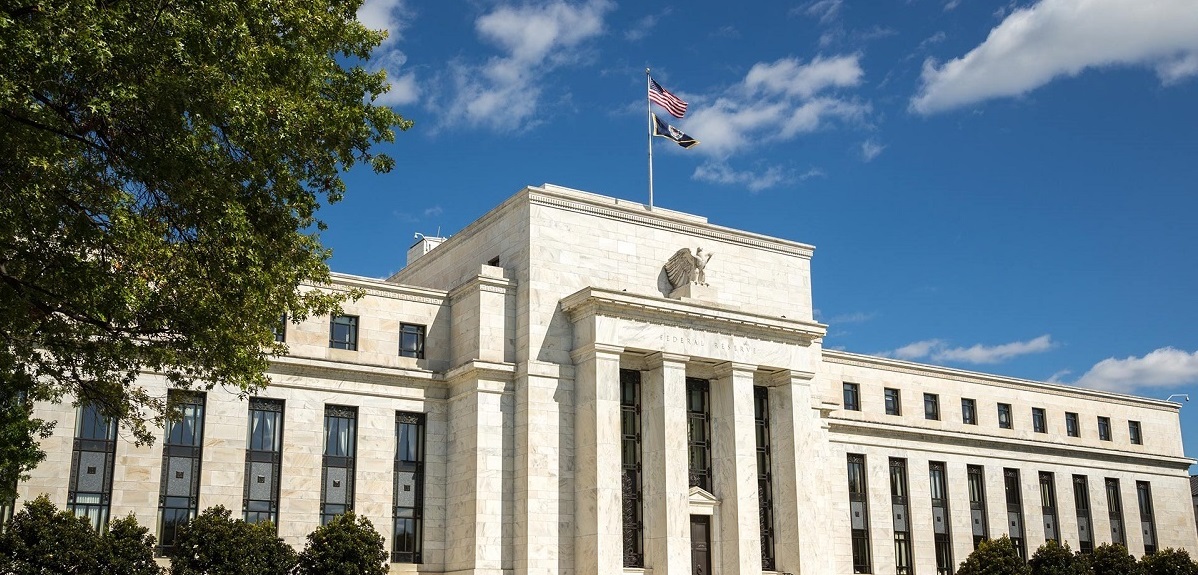Introduction
Central banks play a crucial role in governing and regulating the banking industry. As financial institutions that are responsible for overseeing the stability and soundness of the economy, central banks implement various measures to ensure the smooth functioning of the banking sector.
With their primary objective being the maintenance of price stability and the promotion of economic growth, central banks have a significant influence on the overall financial system. By utilizing tools such as monetary policy, reserve requirements, and bank supervision, central banks regulate the activities of commercial banks and other financial institutions.
The purpose of this article is to provide an overview of the key roles and responsibilities of central banks in governing the banking industry. We will explore the various tools and mechanisms utilized by central banks to maintain stability, ensure compliance, and protect consumers in the financial market. Understanding the role of central banks is essential for both industry professionals and the general public, as it directly impacts the overall health and functioning of the economy.
By examining aspects such as monetary policy, bank supervision and regulation, crisis management, and deposit insurance, we will gain insights into how central banks exert their influence over the banking industry. It is through the effective implementation of these tools that central banks can mitigate risks, prevent financial crises, and safeguard the interests of depositors and borrowers.
While the specific roles and responsibilities of central banks may vary across different jurisdictions, the fundamental principles remain relatively consistent. By wielding their unique powers and authority, central banks are able to maintain stability in the banking sector, promote economic growth, and protect the interests of all stakeholders in the financial system.
Role of Central Banks in the Banking Industry
The role of central banks in the banking industry is multifaceted, encompassing monetary policy, bank supervision and regulation, crisis management, and consumer protection. Central banks act as the main regulatory authority in the financial system, responsible for ensuring the stability and efficiency of the banking sector.
One of the primary roles of central banks is the implementation of monetary policy. Through the manipulation of interest rates, central banks influence borrowing costs, which in turn affect economic growth, inflation, and employment. By adjusting interest rates, central banks can stimulate economic activity during periods of low growth or curb inflation during periods of high inflation.
In addition to monetary policy, central banks establish and enforce reserve requirements for commercial banks. Reserve requirements refer to the percentage of customer deposits that banks must hold as reserves. By setting these requirements, central banks ensure that banks have enough liquid assets to meet their obligations and maintain solvency.
Central banks also conduct open market operations, which involve buying or selling government securities in the open market. Through these operations, central banks can influence interest rates and the overall liquidity in the banking system. By injecting liquidity, central banks provide banks with the necessary funds to meet their obligations and support economic activity.
Another crucial area of central bank involvement is bank supervision and regulation. Central banks are responsible for licensing and chartering banks, ensuring they meet regulatory requirements before commencing operations. They also monitor banks’ compliance with capital and liquidity requirements, conduct stress tests to assess their resilience to economic shocks, and enforce consumer protection measures to safeguard the rights of bank customers.
Central banks play a vital role in overseeing payment systems, ensuring the smooth and secure transfer of funds between banks and individuals. They establish and maintain payment systems oversight frameworks to prevent disruptions, mitigate fraud risks, and promote efficiency and accessibility in payment services.
In times of crisis, central banks act as the lender of last resort, providing emergency liquidity to distressed banks to prevent systemic collapse. They also develop resolution frameworks to handle the orderly winding down of failing banks, minimizing the impact on the financial system and protecting depositors’ interests.
Furthermore, central banks often collaborate with other regulatory agencies to ensure a well-coordinated and cohesive approach to banking supervision and regulation. They work closely with government entities, international organizations, and industry stakeholders to develop and implement policies that promote financial stability and maintain public confidence in the banking system.
Overall, central banks are indispensable in governing the banking industry. Through their varied roles and responsibilities, they establish and maintain a regulatory framework that promotes financial stability, fosters economic growth, and protects the interests of all participants in the banking sector.
Monetary Policy
Monetary policy is one of the key tools utilized by central banks to regulate the banking industry and influence the broader economy. It refers to the actions taken by central banks to control the money supply, interest rates, and credit conditions in order to achieve their macroeconomic objectives.
The main objective of monetary policy is to maintain price stability while promoting sustainable economic growth. Central banks typically use a combination of interest rate adjustments and open market operations to influence the availability and cost of credit in the economy.
One of the primary instruments of monetary policy is the manipulation of interest rates. By raising or lowering the benchmark interest rate, central banks can influence borrowing costs for individuals, businesses, and banks. When the economy is overheating, central banks may increase interest rates to curb inflationary pressures and slow down economic activity. Conversely, during periods of economic downturn or low inflation, central banks may lower interest rates to stimulate borrowing and spending, boosting economic growth.
In addition to interest rates, central banks conduct open market operations to influence the money supply and liquidity in the banking system. Open market operations involve the buying or selling of government securities, such as bonds or treasury bills, to inject or withdraw funds from the banking system. When central banks buy government securities, they inject liquidity into the banking system, increasing the money supply. Conversely, when they sell government securities, they reduce liquidity and decrease the money supply.
Central banks also use reserve requirements as a tool for implementing monetary policy. Reserve requirements refer to the percentage of customer deposits that banks must hold as reserves. By adjusting these requirements, central banks can influence the amount of funds that banks can lend out, thereby affecting the availability and cost of credit in the economy. Increasing reserve requirements restricts banks’ ability to lend and decreases the money supply, while reducing reserve requirements has the opposite effect.
Overall, monetary policy plays a crucial role in shaping the banking industry and the broader economy. Through the manipulation of interest rates, open market operations, and reserve requirements, central banks are able to manage liquidity, control inflation, and stimulate economic growth. By fine-tuning these policy tools, central banks aim to create a stable and conducive economic environment that supports sustainable growth and price stability.
Reserve Requirements
Reserve requirements are a key tool used by central banks to regulate the banking industry and ensure the stability of the financial system. Reserve requirements refer to the minimum amount of funds that banks are required to hold as reserves, typically in the form of cash or deposits with the central bank.
The primary purpose of reserve requirements is to ensure that banks have sufficient reserves to meet their obligations and maintain solvency. By setting reserve requirements, central banks can control the amount of money that banks can lend out, thereby influencing the overall liquidity in the banking system.
When central banks increase reserve requirements, banks are required to hold a larger portion of their customer deposits as reserves. This reduces the amount of funds available for lending, as banks have to maintain a higher level of liquidity. The reduction in lending capacity can help control excessive credit growth and prevent the economy from overheating.
On the other hand, when central banks decrease reserve requirements, banks are allowed to hold a smaller portion of their deposits as reserves. This increases the amount of funds available for lending, promoting credit expansion and stimulating economic activity. Lower reserve requirements can be especially helpful during periods of economic downturn when central banks aim to encourage lending and boost growth.
Reserve requirements also serve as a safety net for depositors. By ensuring that banks hold a portion of their deposits as reserves, central banks provide a layer of protection for depositors in the event of bank failures. The reserves act as a source of funds that can be used to repay depositors their insured amounts, helping maintain public confidence in the banking system.
It is important to note that reserve requirements vary across jurisdictions and typically depend on factors such as the size of the bank and the type of deposits it holds. Central banks may also implement differentiated reserve requirements, imposing higher ratios on certain types of deposits or specific institutions deemed to be systemically important.
Overall, reserve requirements are a vital tool used by central banks to manage liquidity, control credit expansion, and safeguard the stability of the banking industry. By setting appropriate reserve ratios, central banks can strike a balance between promoting economic growth and maintaining financial stability.
Interest Rates
Interest rates play a critical role in the functioning of the banking industry and the broader economy. Central banks have the authority to set and adjust interest rates, using them as a tool to influence borrowing costs, control inflation, and stimulate economic growth.
When the economy is in a period of low growth or recession, central banks can lower interest rates to encourage borrowing and spending. By reducing the cost of credit, lower interest rates make it more attractive for individuals and businesses to take out loans and invest in new projects. This increased borrowing and spending stimulate economic activity, leading to increased production, employment, and ultimately, economic growth.
Conversely, when the economy is experiencing high inflation or is at risk of overheating, central banks may raise interest rates. Higher interest rates increase the cost of borrowing, making it less attractive for individuals and businesses to take on new debt. This decrease in borrowing and spending helps to cool down the economy, reducing inflationary pressures and preventing unsustainable levels of growth.
Interest rate adjustments by central banks impact not only consumers and businesses but also financial institutions. Banks rely on the spread between the interest rates at which they borrow (such as from depositors or other banks) and the interest rates at which they lend (such as through loans or mortgages). When central banks lower interest rates, it reduces banks’ borrowing costs and allows them to offer lower interest rates to borrowers, potentially spurring loan demand. On the other hand, when central banks increase interest rates, banks’ borrowing costs rise, potentially leading to higher interest rates for borrowers and a slowdown in loan demand.
Central banks also set key interest rates known as the benchmark rates. These rates serve as the foundation for determining the interest rates charged by banks on various financial products, such as mortgages, personal loans, and business loans. Changes in benchmark rates directly affect the interest rates offered to borrowers by banks, impacting affordability and demand for credit.
It is worth noting that in some cases, central banks use unconventional monetary policy measures, such as negative interest rates, to provide additional stimulus to the economy. Negative interest rates effectively charge banks for holding excess reserves, incentivizing them to lend or invest the funds instead. This policy aims to encourage banks to increase lending, boost economic activity, and combat deflationary pressures.
Overall, interest rates are a powerful tool in the hands of central banks to manage inflation, stimulate economic growth, and maintain stability in the banking industry. By adjusting interest rates, central banks can steer the economy towards desired outcomes and shape the borrowing and lending behavior of individuals, businesses, and financial institutions.
Open Market Operations
Open market operations are a crucial tool used by central banks to implement monetary policy and influence the overall liquidity in the banking system. These operations involve the buying and selling of government securities, such as bonds or treasury bills, in the open market.
Through open market operations, central banks can adjust the amount of money available in the banking system. When central banks buy government securities, they inject liquidity by transferring funds from their accounts to the accounts of banks and other financial institutions. This increases the money supply, providing banks with additional funds that can be used for lending and investment purposes.
Conversely, when central banks sell government securities, they withdraw liquidity from the banking system. By transferring funds from the accounts of banks and financial institutions to their own accounts, central banks reduce the money supply and decrease the availability of funds for lending and investment.
The primary objective of open market operations is to influence short-term interest rates. When central banks buy government securities and inject liquidity, it increases the supply of funds available to banks. As a result, the competition for deposits among banks decreases, and the interest rates for short-term borrowing, such as the interbank lending rate, tend to decrease. Lower interest rates can stimulate borrowing and spending, boosting economic activity.
Similarly, when central banks sell government securities and withdraw liquidity, the supply of funds available to banks decreases. The reduced availability of funds can lead to increased competition among banks for deposits, pushing short-term interest rates upward. Higher interest rates can help control inflationary pressures and slow down economic growth.
Open market operations are flexible and can be adjusted quickly in response to changing economic conditions and monetary policy objectives. Central banks use market intelligence and economic data to determine the appropriate timing and size of their operations to achieve their desired policy goals.
Open market operations also have secondary effects on financial markets. The buying or selling of government securities by central banks can influence bond prices, yields, and market liquidity. These effects can have ripple effects across financial markets, impacting the cost of borrowing for governments, businesses, and consumers.
Overall, open market operations serve as a powerful tool in the arsenal of central banks to manage liquidity, control interest rates, and implement monetary policy. By strategically buying or selling government securities, central banks can influence the availability of funds and shape the financial landscape, ultimately aiming to achieve their macroeconomic goals.
Bank Supervision and Regulation
Bank supervision and regulation are critical functions performed by central banks to ensure the stability, integrity, and soundness of the banking industry. Through effective supervision and regulation, central banks strive to maintain public confidence in the financial system and protect the interests of depositors and other stakeholders.
One of the key aspects of bank supervision is the licensing and chartering of banks. Central banks are responsible for granting licenses and charters to banks, ensuring that they meet certain criteria and comply with legal and regulatory requirements before they can operate. This process helps to ensure that only well-managed and financially viable institutions are allowed to operate in the banking industry.
Central banks also establish and enforce capital and liquidity requirements for banks. Capital requirements refer to the minimum amount of capital that banks must hold in proportion to their risk-weighted assets. This ensures that banks have a sufficient financial cushion to absorb losses and maintain solvency. Liquidity requirements, on the other hand, pertain to the minimum amount of high-quality liquid assets that banks must hold to meet short-term obligations and manage liquidity risk.
Additionally, central banks conduct stress tests on banks to assess their resilience to adverse economic conditions and shocks. Stress tests simulate various scenarios, such as economic downturns or market disruptions, to evaluate how banks would withstand such situations. Stress tests help identify potential weaknesses and vulnerabilities in the banking system, enabling central banks to take proactive measures to address them before they turn into systemic risks.
Consumer protection is another crucial aspect of bank supervision and regulation. Central banks establish regulations and guidelines to safeguard the rights and interests of bank customers. These regulations may cover areas such as transparent fee structures, fair lending practices, and dispute resolution mechanisms. By ensuring adequate consumer protection, central banks promote trust and confidence in the banking industry, protecting consumers from unfair practices and maintaining the integrity of financial markets.
Payment systems oversight is another area of focus for central banks. They are responsible for overseeing the safety, efficiency, and reliability of payment systems, which are critical in facilitating financial transactions between banks and individuals or businesses. Central banks establish and enforce standards, regulations, and guidelines to maintain the integrity and smooth functioning of payment systems, minimizing operational and fraud risks.
In times of financial crisis, central banks play a pivotal role in crisis management and resolution. They develop and implement frameworks to deal with failing banks and systemic risks, aiming to maintain financial stability and protect depositors. Central banks may provide emergency liquidity support to struggling banks as a lender of last resort and coordinate with relevant authorities to ensure an orderly resolution of failing banks.
Deposit insurance is another significant aspect of bank supervision and regulation. Central banks often collaborate with deposit insurance agencies to establish and administer deposit insurance schemes that protect depositors against losses in the event of bank failures. By providing deposit insurance, central banks enhance public confidence and trust in the banking system, safeguarding individuals’ savings and promoting financial stability.
Bank supervision and regulation are ongoing processes that require continuous monitoring, assessment, and adaptation to evolving risks and market conditions. By effectively supervising and regulating banks, central banks contribute to the resilience and stability of the banking industry, creating a safe and sound financial system that supports economic growth and serves the needs of society.
Licensing and Chartering
Licensing and chartering are fundamental responsibilities of central banks in the context of bank supervision and regulation. Before a bank can operate, it must obtain a license or charter from the central bank, ensuring that it meets specific criteria and complies with relevant laws and regulations.
Central banks carefully evaluate and assess the eligibility of banks seeking licenses or charters. This process involves a thorough examination of the bank’s financial health, organizational structure, management expertise, and risk management capabilities. The objective is to ensure that only robust and well-managed institutions are permitted to operate in the banking industry.
The licensing and chartering process typically involves a rigorous assessment of the bank’s business plan, its compliance with anti-money laundering and counter-terrorism financing measures, and its adherence to prudential regulations such as capital adequacy requirements. Central banks also consider the bank’s proposed products and services, its target market, and its overall viability and sustainability in determining whether to grant a license or charter.
Central banks also assess the fitness and propriety of the individuals who will be responsible for managing the bank. Factors such as their qualifications, experience, integrity, and reputation are taken into account to ensure that key personnel have the requisite skills and character to effectively oversee and operate the bank.
Once a bank has obtained a license or charter, it becomes subject to ongoing supervision to ensure compliance with regulatory requirements and to address any emerging risks or issues. Central banks conduct regular assessments, inspections, and audits of licensed banks to monitor their financial condition, risk management practices, and adherence to regulations.
In some jurisdictions, central banks may have the authority to revoke or suspend licenses or charters if a bank fails to meet its obligations or if it is deemed to pose a significant risk to financial stability. This ensures that only institutions that continue to meet the required standards are allowed to operate in the banking industry.
Licensing and chartering are crucial mechanisms for central banks to foster a safe, secure, and stable banking sector. By carefully evaluating the eligibility and fitness of banks, central banks contribute to the overall integrity and soundness of the financial system. Additionally, the licensing and chartering process helps build public trust and confidence in the banking industry, as customers can have assurance that licensed banks have undergone rigorous scrutiny and meet stringent regulatory standards.
Capital and Liquidity Requirements
Capital and liquidity requirements are essential regulatory tools used by central banks to ensure the stability and resilience of the banking industry. These requirements serve as safeguards to protect banks and the financial system from potential risks and shocks.
Capital requirements refer to the minimum amount of capital that banks are required to hold in relation to their risk-weighted assets. The purpose of these requirements is to ensure that banks possess a sufficient financial cushion to absorb potential losses and maintain solvency. The capital acts as a buffer against unexpected events, reducing the likelihood of a bank becoming insolvent and protecting depositors’ funds.
Central banks establish capital adequacy frameworks based on international standards, such as the Basel Accords. These frameworks assign risk weights to different types of assets, reflecting their level of risk. Banks must hold a proportionate amount of capital in relation to their risk-weighted assets, with higher-risk assets requiring a higher capital allocation.
Liquidity requirements, on the other hand, pertain to the minimum amount of high-quality liquid assets that banks must hold to meet their short-term obligations and manage liquidity risk. These requirements ensure that banks have readily available funds to meet unexpected liquidity demands, such as sudden withdrawals by customers or the inability to access funding markets.
Central banks establish liquidity requirements to reduce the likelihood of banks facing liquidity shortages, which could lead to financial distress or even insolvency. By mandating that banks maintain adequate liquidity buffers, central banks aim to promote the stability and confidence of the banking system.
Liquidity requirements may be in the form of a liquidity coverage ratio (LCR) or a net stable funding ratio (NSFR). The LCR sets out the minimum amount of high-quality liquid assets banks must hold to cover potential cash outflows over a 30-day period under stressed market conditions. The NSFR, on the other hand, assesses the stability and sustainability of banks’ funding sources over a longer-term horizon.
Capital and liquidity requirements are dynamic and are periodically reviewed and enhanced as necessary. Central banks conduct regular assessments and stress tests to evaluate the adequacy of banks’ capital and liquidity buffers, taking into consideration the prevailing economic conditions and emerging risks in the financial markets.
Stricter capital and liquidity requirements help enhance the resilience of banks and minimize the likelihood of financial crises. By ensuring that banks maintain adequate capital and liquidity levels, central banks contribute to the stability, integrity, and soundness of the banking industry, thereby protecting the interests of depositors and promoting financial stability.
Stress Testing
Stress testing is a critical tool used by central banks to assess the resilience and stability of banks in the face of adverse economic conditions or financial shocks. It involves subjecting banks’ balance sheets and financial positions to severe stress scenarios to evaluate their ability to withstand and recover from potential risks.
The main objective of stress testing is to identify vulnerabilities and assess the potential impact of adverse events on banks’ capital adequacy, liquidity, and overall financial soundness. It helps central banks and regulatory authorities to better understand the potential risks that banks may face and take appropriate measures to mitigate them.
Stress tests simulate a variety of adverse scenarios, such as economic downturns, interest rate shocks, or widespread defaults, to evaluate how banks would fare and whether they would be able to continue operating under extreme conditions. These scenarios are carefully designed to reflect realistic but severe situations that could significantly impact the financial industry.
Stress testing examines various risk factors, including credit risk, market risk, and liquidity risk, to assess their potential impact on banks’ balance sheets. It evaluates how changes in economic conditions or market variables would affect banks’ loan portfolios, trading assets, funding sources, and capital positions.
Central banks design stress tests by setting specific parameters and assumptions, which may include changes in GDP, unemployment rates, interest rates, credit quality, and market volatility. By subjecting banks to these scenarios, central banks gain insights into banks’ vulnerability to different types of risks and can tailor regulatory requirements and interventions accordingly.
Stress tests are conducted on a regular basis, allowing central banks to monitor and evaluate the stability of banks over time. The results of stress tests provide valuable information for both banks and regulators. Banks can identify areas of weakness and take necessary actions to strengthen their risk management practices, while regulators can use the results to assess the overall resilience of the banking system and implement appropriate supervisory measures.
Stress testing also enhances transparency and communication between central banks, regulators, and banks. By sharing stress test results with the public, central banks promote market discipline and instill confidence in the banking sector. Investors, depositors, and other stakeholders can make informed decisions based on the disclosed information, contributing to the overall stability and trust in the financial system.
Overall, stress testing plays a crucial role in ensuring the resilience and stability of banks. By subjecting banks to rigorous scenarios and evaluating their capability to weather adverse events, central banks can take proactive measures to strengthen the banking system, mitigate risks, and protect the interests of depositors and the wider economy.
Consumer Protection
Consumer protection is a vital aspect of the regulatory framework established by central banks to safeguard the rights and interests of individuals and businesses in their interactions with banks and other financial institutions. It aims to ensure fair, transparent, and responsible practices in the financial industry, promoting trust, confidence, and stability.
Central banks work closely with regulatory authorities to develop and enforce rules and regulations that protect consumers from unfair or deceptive practices. These regulations cover various aspects of banking operations, such as transparent fee structures, fair lending practices, and proper disclosure of terms and conditions for products and services.
One key area of consumer protection is the provision of accurate and comprehensive information to customers. Banks are required to provide clear and understandable information about their products and services, including interest rates, fees, charges, and any potential risks involved. This enables consumers to make informed decisions and avoid being misled or deceived by misleading advertising or marketing practices.
Central banks also enforce regulations regarding responsible lending and borrowing. Banks must assess the creditworthiness of customers before granting loans, ensuring that borrowers have the capacity to repay their debts without undue financial burden. This protects consumers from falling into excessive debt and reduces the risk of default, benefiting both borrowers and lenders.
Consumer protection extends to vulnerable groups in society, such as low-income individuals, senior citizens, and those with limited financial literacy. Central banks work towards ensuring that these groups have access to basic banking services and are not subjected to discriminatory practices that exclude them from the financial system. They promote financial education and awareness programs to empower consumers to make sound financial decisions and protect themselves from fraud or exploitation.
In cases where disputes arise between consumers and banks, central banks often establish mechanisms for resolving complaints and disputes in a fair and efficient manner. These mechanisms may include mediation, arbitration, or ombudsman services, providing consumers with accessible channels to address their grievances and seek remedies against unfair treatment.
Central banks also monitor the conduct and behavior of banks to ensure compliance with consumer protection regulations. They may conduct regular audits and inspections to assess banks’ adherence to fair practices and take appropriate enforcement actions against banks that violate consumer protection rules.
Consumer protection regulations and initiatives contribute to maintaining the integrity and reputation of the banking industry. By fostering a fair and transparent environment, central banks enhance public trust and confidence in the financial system, which, in turn, supports economic growth and stability.
Overall, consumer protection is an integral part of the regulatory framework established by central banks. By focusing on the interests and rights of individuals and businesses, central banks contribute to a banking system that operates with integrity and serves the needs of society.
Payment Systems Oversight
Payment systems oversight is a key responsibility of central banks, ensuring the safety, efficiency, and reliability of payment systems and facilitating seamless financial transactions between individuals, businesses, and financial institutions. Central banks establish and enforce regulations and standards to maintain the integrity and smooth functioning of payment systems.
Payment systems include various mechanisms and networks that enable the transfer of funds between banks and individuals or businesses, such as wire transfers, automated clearinghouses, card payment systems, and electronic funds transfers. These systems play a critical role in facilitating economic activities and ensuring the timely settlement of financial transactions.
Central banks monitor and supervise payment systems to mitigate operational and financial risks. They establish rules and guidelines to ensure that payment systems comply with internationally accepted standards, such as those developed by the Committee on Payments and Market Infrastructures (CPMI) and the International Organization of Securities Commissions (IOSCO).
Payment systems oversight encompasses several key objectives:
- Operational Resilience: Central banks ensure that payment systems have robust infrastructures and technologies in place, capable of handling high transaction volumes securely. Regular assessments and audits help identify vulnerabilities and weaknesses that could undermine the reliability and stability of payment systems.
- Security and Fraud Prevention: Central banks set and enforce stringent security standards to protect payment systems from cyber threats, fraud, and money laundering. They work closely with stakeholders to implement measures such as strong customer authentication, encryption protocols, and fraud detection mechanisms to enhance the security of financial transactions.
- Efficiency and Accessibility: Central banks promote the efficiency and accessibility of payment systems, reducing transaction costs and streamlining processes. They encourage the adoption of innovative payment technologies and interoperability among different payment systems to enhance the speed and convenience of transactions.
- Risk Management: Central banks oversee the soundness of payment systems by monitoring and mitigating various risks, including liquidity risk, credit risk, and operational risk. They establish rules and mechanisms for settlement finality and collateral management to ensure the timely and secure transfer of funds.
- Compliance with Regulations: Central banks ensure that payment systems comply with relevant laws and regulations, including anti-money laundering (AML) and counter-terrorism financing (CTF) measures. They monitor the implementation of these regulations and take appropriate enforcement actions against non-compliant entities.
Through their oversight of payment systems, central banks contribute to financial stability, enhance trust in the financial system, and protect the interests of consumers and businesses. They play a vital role in promoting confidence in electronic payment methods and facilitating the seamless flow of funds in the economy.
Central banks collaborate with other regulatory bodies, government entities, and industry stakeholders to ensure a coordinated and cohesive approach to payment systems oversight. By leveraging expertise and sharing information, they continuously strive to enhance the safety, efficiency, and accessibility of payment systems, keeping pace with technological advancements and evolving market conditions.
Crisis Management and Resolution
Crisis management and resolution are crucial functions of central banks, aimed at ensuring the stability and resilience of the banking industry during times of distress or systemic crises. Central banks play a pivotal role in coordinating and implementing measures to address financial disruptions and protect the interests of depositors and the wider economy.
Central banks act as the lender of last resort during a crisis, providing emergency liquidity support to financial institutions facing liquidity shortages. This helps prevent bank runs and mitigate systemic risks that could lead to a collapse of the banking system. By injecting liquidity, central banks stabilize the situation and provide banks with the necessary funds to meet their immediate obligations.
In addition, central banks develop and implement crisis management frameworks to guide the resolution of failing banks in an orderly manner. These frameworks outline the processes that should be followed when a bank is no longer viable and needs to be restructured or wound down. The objective is to minimize the impact on financial stability and protect the interests of depositors and other stakeholders.
Central banks work closely with regulatory authorities, government entities, and other stakeholders to ensure a coordinated response during a crisis. They collaborate with relevant agencies to assess the financial health of banks and identify those that are at risk. Central banks employ various stress testing scenarios and analyses to anticipate potential vulnerabilities and take pre-emptive measures to address them.
Moreover, central banks regularly engage in crisis preparedness activities and contingency planning. They establish mechanisms to assess the potential impact of different crisis scenarios on the banking system and the wider economy. Central banks also participate in international forums and exchange information to stay connected with global crisis management practices and enhance their crisis resolution capabilities.
Central banks may have resolution tools at their disposal, such as bridge banks or asset separation mechanisms, to facilitate the orderly resolution of failing banks. These tools are aimed at minimizing the disruption to the financial system while safeguarding depositors and critical operations.
Deposit insurance schemes, often administered or coordinated by central banks, provide an additional layer of protection. These schemes protect depositors by guaranteeing the repayment of their insured deposits even in the event of a bank failure. Deposit insurance helps maintain public confidence in the banking system and prevents widespread panic and loss of trust.
Crisis management and resolution efforts by central banks are guided by the overarching objective of restoring stability in the financial system and supporting economic recovery. Central banks work to restore confidence in the banking industry by implementing transparent and accountable processes. They communicate effectively with market participants, policymakers, and the public to ensure clarity and understanding of the actions taken to address the crisis.
Overall, crisis management and resolution are critical functions of central banks to protect financial stability and maintain trust in the banking system. By deploying effective strategies, coordinating responses, and providing liquidity support, central banks play a pivotal role in ensuring the resilience and integrity of the financial sector in times of crisis.
Deposit Insurance
Deposit insurance is a key component of the banking system designed to protect depositors and maintain confidence in the financial system. Central banks often play a significant role in administering or coordinating deposit insurance schemes, which provide a safety net for depositors in the event of a bank failure.
Deposit insurance guarantees that depositors will be repaid a certain amount of their deposits, typically up to a specified limit, even if the bank in which they have deposited their funds becomes insolvent or unable to fulfill its obligations. The guaranteed amount ensures that depositors will not lose their savings, thus promoting stability and confidence in the financial system.
Deposit insurance schemes are typically funded by premiums paid by banks or financial institutions participating in the insurance program. These premiums are set based on the level of risk posed by each institution. The funds collected from the premiums are used to reimburse depositors in the event of a bank failure.
The coverage limit of deposit insurance varies across jurisdictions. Central banks, in coordination with regulatory authorities, determine the level of coverage provided to depositors. Often, the coverage is set with the objective of protecting small depositors who may be the most vulnerable in the event of a bank failure.
Deposit insurance schemes are crucial in maintaining public confidence in the banking system. By guaranteeing the safety of deposits, they alleviate concerns about potential bank failures and the associated risks to depositors. This promotes trust and encourages individuals and businesses to continue depositing their funds in banks, supporting the stability and functioning of the financial sector.
Central banks also play a role in supervising and ensuring the soundness of the financial institutions covered by deposit insurance schemes. They monitor the financial health and compliance of banks to mitigate risks and take pre-emptive measures to prevent bank failures. By maintaining strong regulatory oversight, central banks aim to minimize the likelihood of bank failures and protect depositors.
In addition to protecting depositors, deposit insurance systems also contribute to financial stability. By assuring depositors that their funds are safe, deposit insurance helps prevent bank runs or panics, which could trigger systemic risks and potentially lead to a broader financial crisis. It acts as a stabilizing factor and reduces the likelihood of contagion effects in the banking system.
Deposit insurance schemes often work in conjunction with central banks’ crisis management and resolution frameworks. In the event of a bank failure, the deposit insurance system supports the resolution process by providing the necessary funds to reimburse depositors up to the coverage limit. This facilitates an orderly resolution while minimizing disruptions to the financial system and protecting depositor interests.
Central banks collaborate with deposit insurance agencies, regulatory authorities, and other stakeholders to ensure the effective operation of deposit insurance schemes. They provide guidance, set regulations, and ensure that deposit insurance programs align with international best practices to maintain the integrity and credibility of such schemes.
Overall, deposit insurance is a critical mechanism supervised or coordinated by central banks to protect depositors, maintain financial stability, and instill confidence in the banking system. By providing a safety net for depositors and assuring them of the security of their funds, deposit insurance contributes to the overall resilience and trustworthiness of the financial sector.
Conclusion
The role of central banks in governing the banking industry is extensive and multifaceted. Through various tools and mechanisms, central banks play a crucial role in maintaining financial stability, promoting economic growth, and protecting the interests of all stakeholders in the financial system.
From implementing monetary policy to setting reserve requirements and conducting open market operations, central banks use different measures to influence the availability of credit, control inflation, and manage liquidity in the banking industry.
Central banks also have a vital responsibility in supervising and regulating banks. By licensing and chartering banks, establishing capital and liquidity requirements, conducting stress tests, and enforcing consumer protection measures, central banks ensure the soundness and integrity of the banking sector.
Furthermore, central banks oversee payment systems, provide lender-of-last-resort functions in times of crisis, and administer deposit insurance schemes to protect depositors in the event of a bank failure.
Effective central bank governance of the banking industry is essential for maintaining stability, promoting confidence, and fostering economic growth. By employing a wide range of regulatory and supervisory tools, central banks contribute to the resilience and integrity of the financial system while protecting the interests of consumers and supporting the broader economy.
Central banks also play a vital role in coordinating efforts with other regulatory entities, governments, and international organizations to ensure a cohesive and harmonized approach to banking industry governance.
As the banking industry continues to evolve and face new challenges, such as technological advancements and emerging risks, central banks will adapt their approaches and tools to maintain effective governance and address these evolving needs.
Overall, central banks are critical pillars of the banking industry, providing stability, oversight, and regulation to ensure the smooth functioning of financial markets, protect consumers, and foster economic prosperity.

























